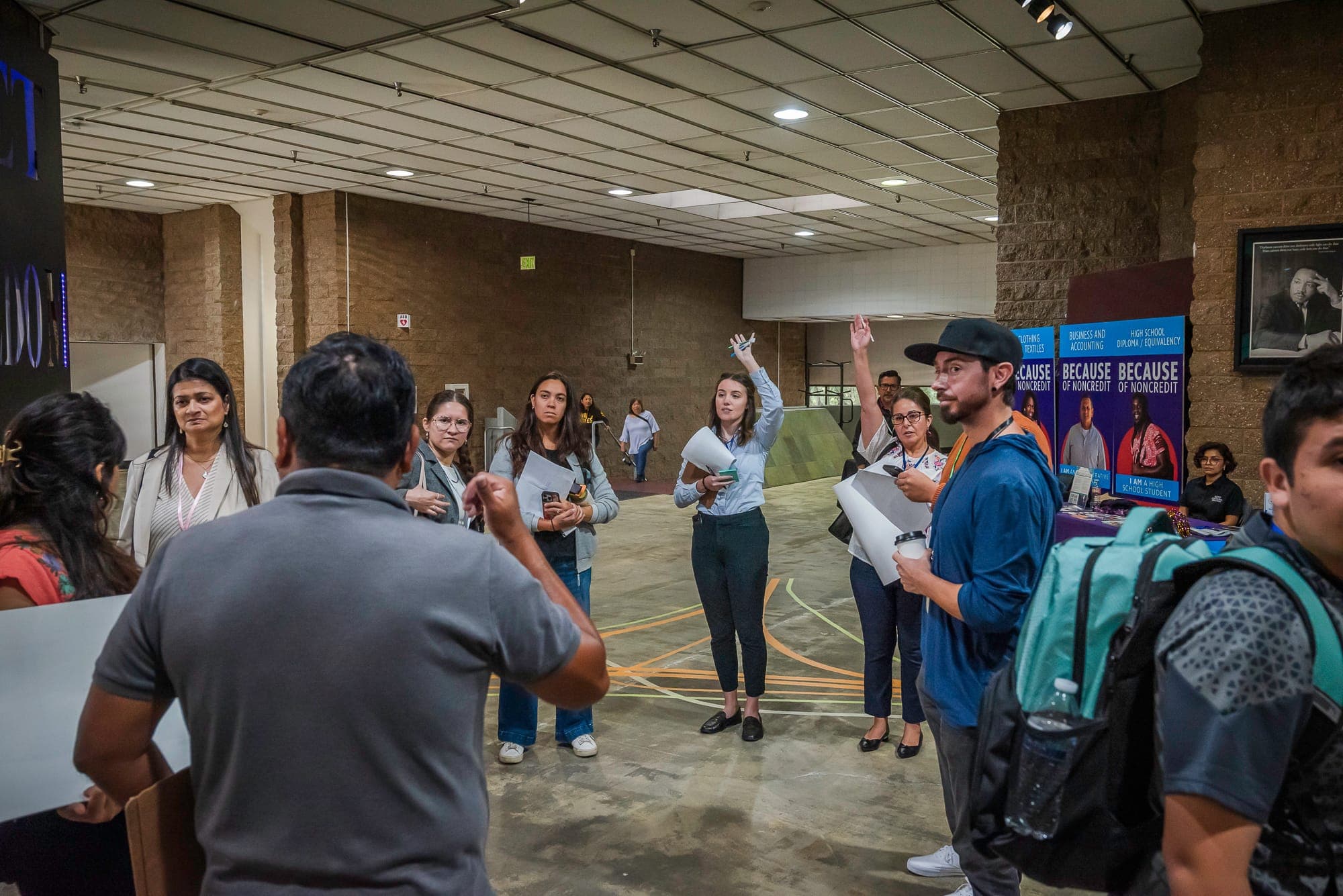
Application open
Community Connectors
Helping small and mid-sized communities repair the damage of divisive infrastructure. Applications are due by August 31, 2025, at 11:59 p.m. Find the application and eligibility details and requirements are below.
Community Connectors informational webinar
1:
What is a quick build?
A quick-build demonstration project is a temporary installation to test new street designs, improve safety and accessibility, and build partnerships for long-term change. These projects can use a variety of materials, from traffic cones to paint, and can last for just a few months to years.
2:
What is SGA’s experience with these types of projects?
SGA has supported cities and towns across the U.S. in designing, installing, and measuring the impact of quick-build projects. These projects have included addressing safety issues on local roads, building partnerships between cities and state departments of transportation, and repairing the harms of urban renewal on neighborhoods.
3:
Will you consider communities with fewer than 50,000 people?
Though we will aim for the 50,000-500,000 population range, we will consider communities close to that population size. Please reach out if you’d like to discuss your specific circumstance.
4:
Can we work on state-owned roads?
Projects on state-owned roads are not eligible for this program.
5:
Can MPOs take the lead for a city?
One of the co-leads must represent the jurisdiction with ownership over the project roadway, so an MPO is not eligible to take the lead for this program. MPO staff can participate as part of the team.
6:
We have a coalition of folks that represent public agencies, nonprofits, and residents. Is this a good project for them?
An existing coalition could be a great fit for the project team. Just make sure one co-lead represents the jurisdiction that owns the roadway and the other co-lead represents the affected neighborhood/community.
7:
Could a chamber function as the city representative, or do we need a more formal department?
The city co-lead will need to be a part of the city staff that is able to initiate a quick-build demonstration on the proposed roadway. For example, this could be someone with a department of transportation or public works, a city engineer or manager, or someone else able to help navigate and secure approval for the installation. A chamber could function as part of the larger project team, but does not have the range of influence we are looking for in a co-lead.
8:
What are some of the examples of technical assistance we would get?
SGA will provide virtual trainings, an in-person workshop, and individual coaching to each team. The technical expert can provide concept drawings of demonstration projects, collaborative brainstorming for project design, inspiration for materials, and other lessons from prior quick-build experience. The technical expert will be funded through SGA, participating communities will not receive funds directly to support the technical expertise.
9:
Are projects done with this grant typically completed solely with funds from the grant, or will the jurisdiction need funds set aside for materials and construction?
It will depend on the project scale. We’ve seen cities both complete their projects with just grant funds, as in Maryland, and pursue larger projects with additional funding from other sources, like Winchester and Bowling Green, KY. In Kentucky, this additional use of funds included conducting permanent work on the project site through the city’s regular operations and moving the timeline to align with the demonstration project, as well as sparking the city to install permanent improvements on the project site.
10:
What resources can we point to that show this type of work is rooted in concrete data around safety?
Demonstration activities and “pop-up” safety demonstrations are eligible uses of the USDOT Safe Streets and Roads for All grant program, which supports activities that address roadway safety through the Safe Systems Approach. State tools, including Minnesota’s Demonstration Project Implementation Guide and Georgia’s Safe Routes to School Quick-Build Traffic Calming Guidebook, describe the process and safety benefits of quick builds. These quick-build projects can be used to test proven safety countermeasures as well as other design improvements for safer streets.

© 2025 Smart Growth America. All rights reserved
Site By3Lane Marketing






